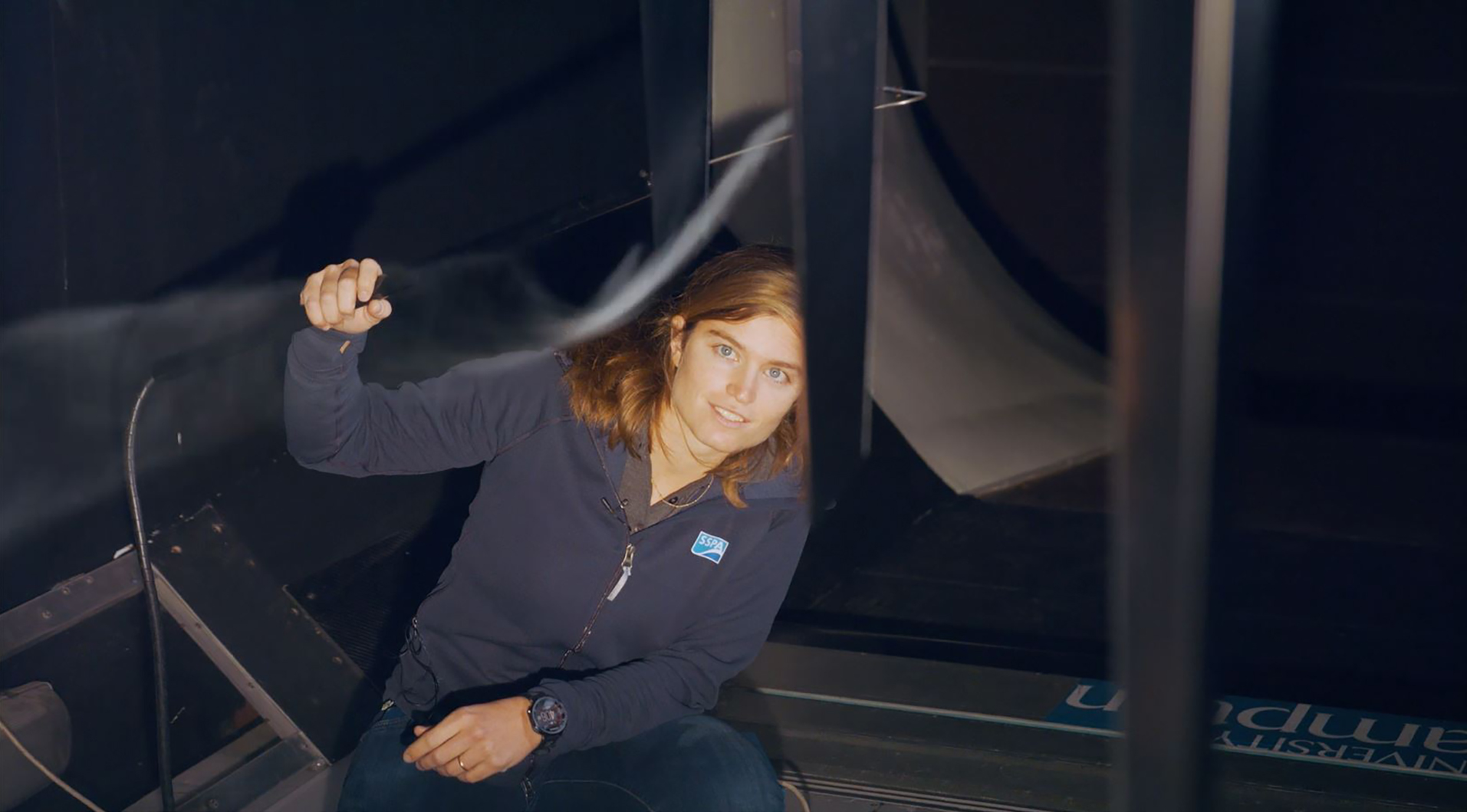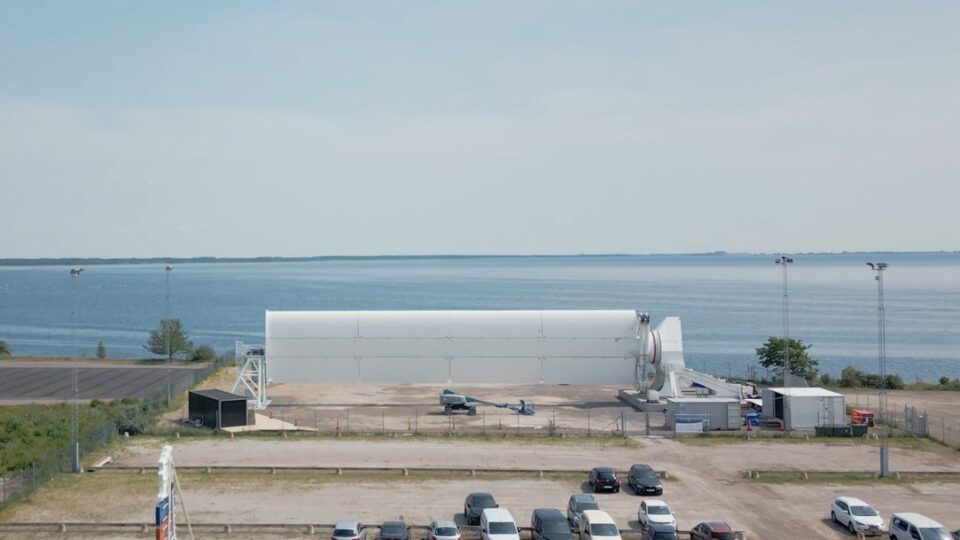The Oceanbird model wings travelled to England, to be hanged upside down in the roof and having strong winds surround them. Watch SSPA´s unique test in a wind tunnel in Southampton.
Aerodynamics is a central part in designing the Oceanbird wings. To understand further how the wind behaves around the wings, SSPA have preformed an advanced test in the R J Mitchell wind tunnel at the University of Southampton.
“This will be very important for the Oceanbird as a project. Having three, four or five interacting wings will change drastically the way the ships are sailed”, says Laura Marimon Giovannetti, Senior researcher at SSPA and in charge of the wind tunnel testing.
The result

Most of the results confirmed earlier calculations, but there were some exceptions were the wind traveled in a different pattern than predicted.
”We’re really impressed by the work that has been done in Southampton by the excellent team led by Laura. Using model testing is not only a great way to build confidence in the simulation methods, but also to study and observe phenomena that are not so easily predicted through numerical analysis. For example wing behaviour in stalled conditions, and dynamic separation phenomena”, says Mikael Razola, Technical Director Oceanbird. “These results will provide valuable input which we bring in the further development of the wing design.”



